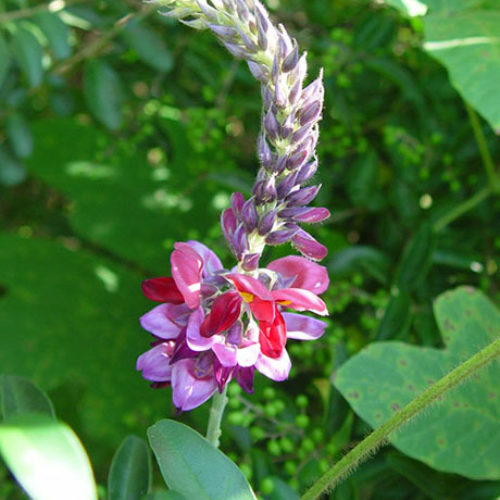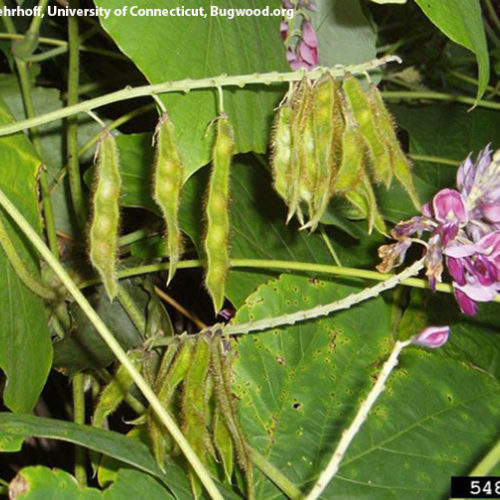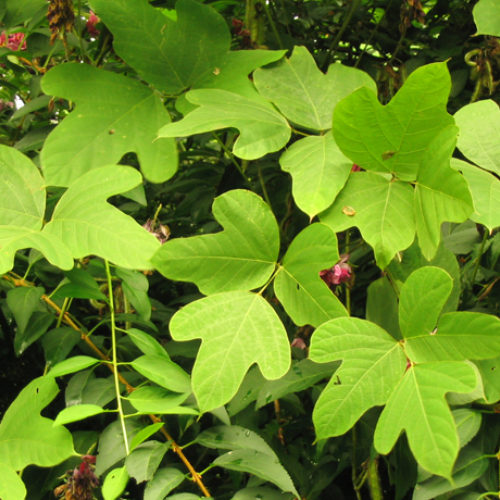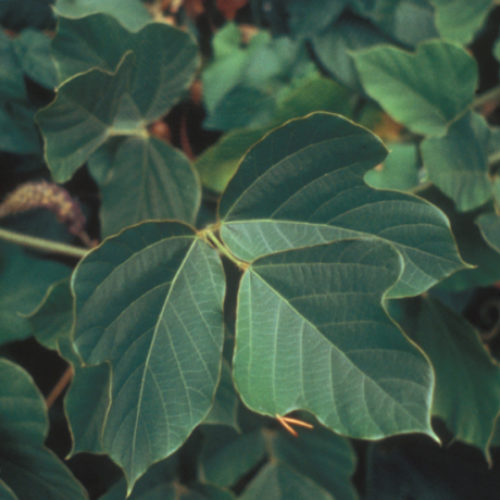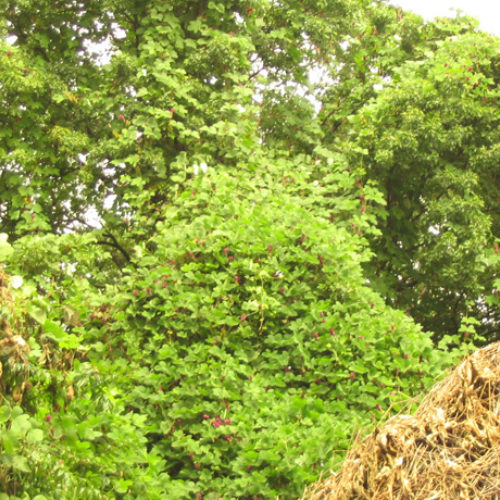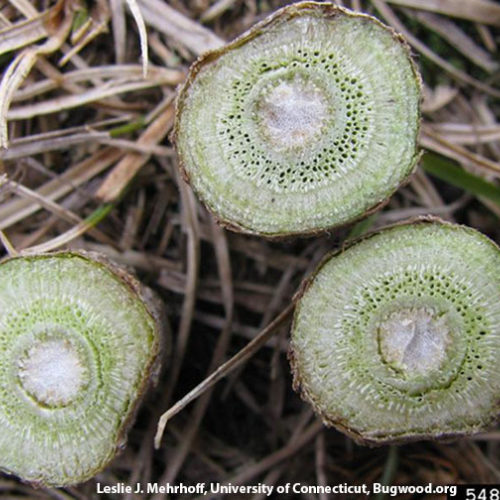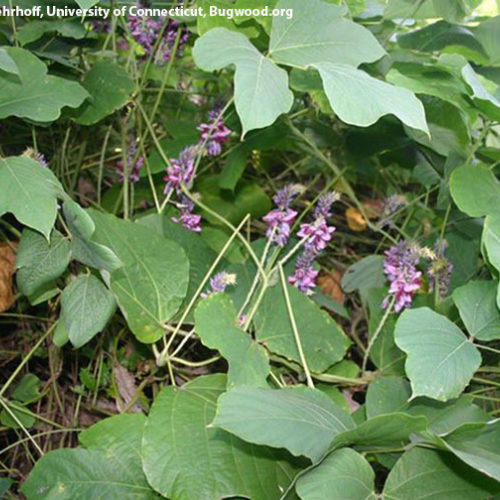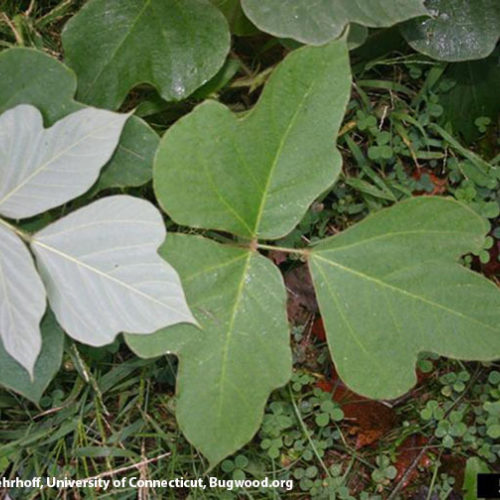Kudzu
Pueraria montana var. lobata
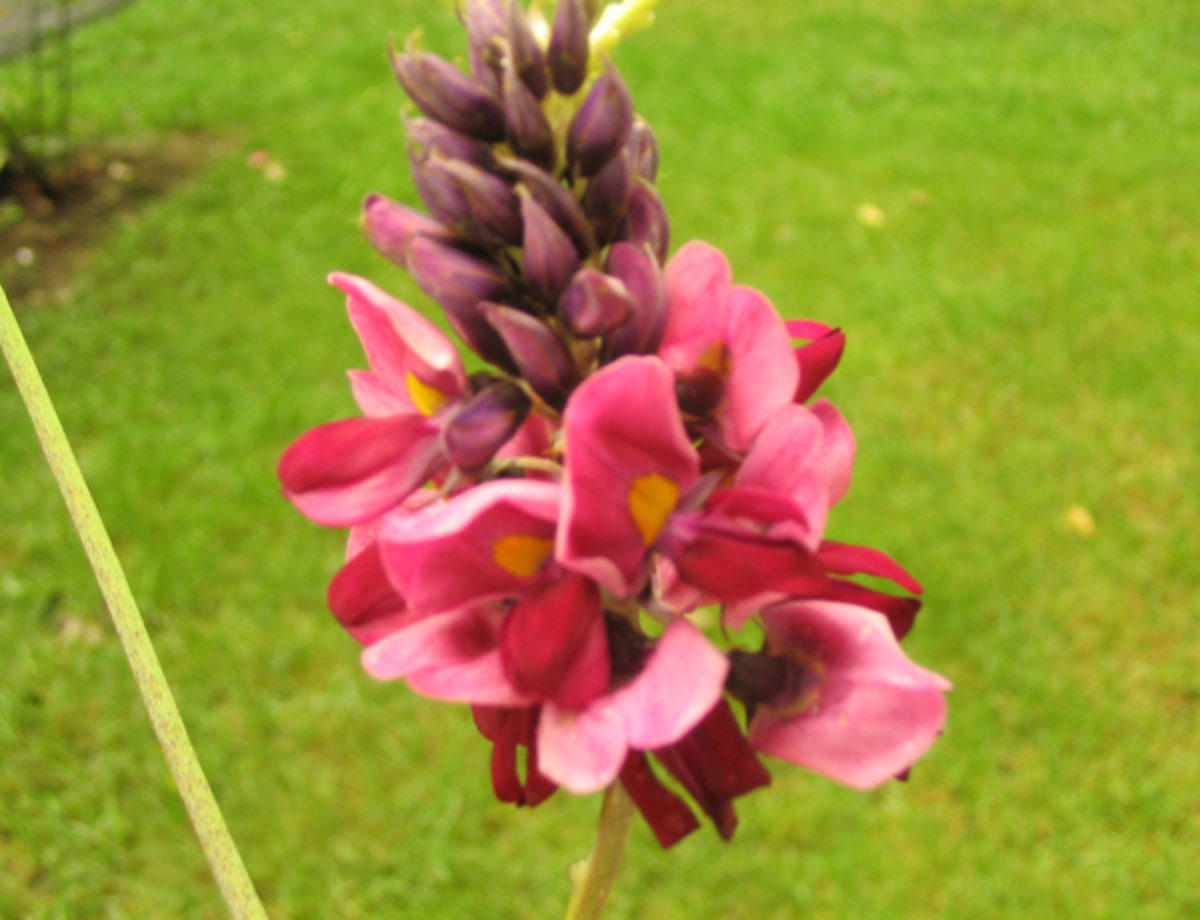
Family: Fabaceae
Other Common Names: Japanese arrowroot
Weed class: A
Year Listed: 2003
Native to: Asia and the Pacific
Is this Weed Toxic?:
not known to be
Legal listings:
WAC 16-752; WSDA Quarantine list (prohibited plant list)
Why Is It a Noxious Weed?
It is a highly aggressive invasive plant which is extremely difficult to control once established. Kudzu is so aggressive it covers and smothers all other plants in its path, resulting in solid single species stands eliminating native species.
How would I identify it?
General Description
It is a perennial, trailing vine which may grow up to one foot a day. Dense stands of kudzu are characterized by thousands of single-colored plants covering everything in their range.
Flower Description
Purple to purplish-red flowers are clustered in axillary racemes up to one foot long. Each flower is pea-like and ½ to ¾ inch. Flowers are fragrant and described as grape-like.
Leaf description
Leaves are alternate and compound with three oval to nearly heart-shaped leaflets, each three to four inches long. They are dark green and may be entirely or slightly lobed. Leaves and stems are hairy.
Stem description
Vines may grow as long as 98 feet. A single root crown may produce as many as 30 vines which become somewhat woody and expand out in all directions.
Fruit Seed Description
Kudzu typically flowers and forms seedpods on climbing vines. Seed pods produce small amounts of viable seed. Seed pods are flattened, brown and hairy and are around 2 inches long.
Where does it grow?
Kudzu grows best in well-drained degraded or eroded land or in disturbed, sandy, deep loam soils in full sun. It will, however, invade well-drained acid-soil forests as well as the floor of a closed canopy forest. Please click here to see a county level distribution map of kudzu in Washington.
How Does it Reproduce?
Reproduction by seed is believed to be minimal. Most reproduction is by vegetative reproduction of vines which root at every node, forming root crowns that then send out new growth and create extensive plant coverage within one year.
How Do I Control It?
General Control Strategy
Control of well established kudzu stands can take up to 10 years. Persistent treatment of patches is the only true control measure.
Mechanical Control
Mechanical control methods require enormous persistence since the goal is to deplete the rootstocks of stored food and prevent replenishment through the photosynthesis of above ground vegetation.
Biological Control
Kudzu produces forage, which is palatable to livestock. Studies have found that goats may provide a viable alternative to chemical control.
Herbicide Control
There are several chemical methods for control of Kudzu, please refer to the PNW Weed Management Handbook, or contact your county noxious weed coordinator.
For More Information
See our postcard for early detection information about kudzu.
See our Written Findings for more information about kudzu (Pueraria montana var. lobata).
Whatcom County NWCB Fact Sheet on kudzu



